WordPress is the most popular CMS globally, but its reach is limited if your content is in multiple languages. WordPress translation plugins are a simple and elegant solution to that problem. With tools like these plugins and themes with built-in translation and multi-language support, making your site accessible to a much larger audience can take minimal effort.
This article will introduce you to the top available WordPress translation plugins and highlight some of their best features.
Why Use A WordPress Translation Plugin
When you create your WordPress site, you can set your preferred language in the native dashboard. Go to Settings and then General, then scroll down to Site Language. Choose your preferred dashboard language from the drop-down menu.
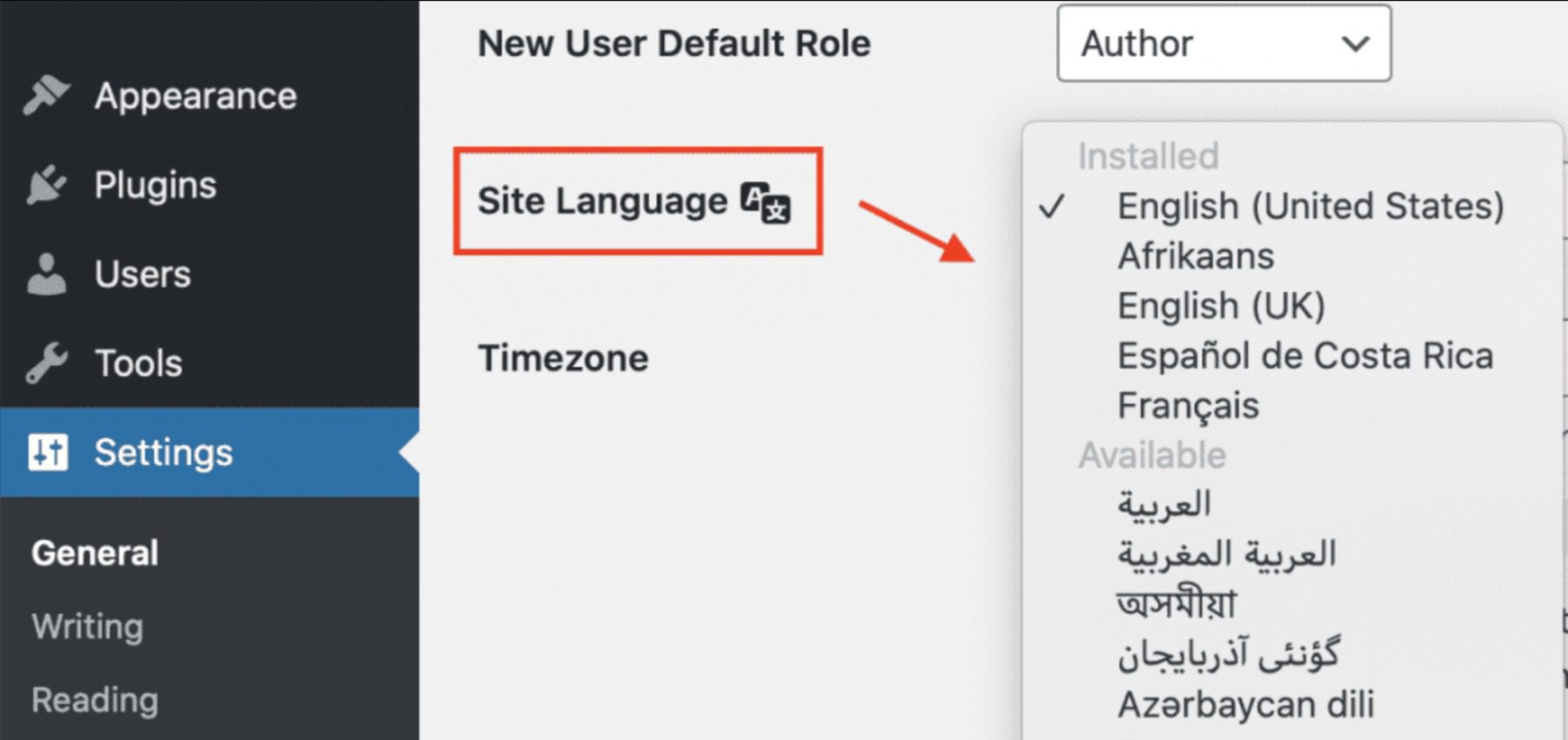
While this will change the language of your dashboard, you’ll need a plugin if you want to create multilingual websites. These plugins eliminate the need to set up multiple WordPress subdomains and instead turn your website into a multilingual platform.
There are two types of translation plugins:
- Auto Translations
- Manual Translations
Auto-translations will automatically translate preexisting content from your website to your users’ preferred language but will sacrifice some accuracy (Google translate levels of accuracy.) On the other hand, Manual translations let your users view the languages you have transcribed manually, which sacrifices speed and convenience for accuracy and customizability.
The Top Translation WordPress Plugins
Now that we better understand what a translation plugin can do let’s get into our top choices for WordPress translation plugins.
1. WPML
🥇Most Popular WordPress Translation Plugin Overall
While there are many free options for WordPress translation plugins, WPML (or WordPress Multilingual) is a premium plugin and service that covers everything you need for translation. One of the driving forces behind WPML is that it is an all-in-one solution to translation that you get control of, not your readers’ machines. Not every site out there will need the entire WPML platform (for instance, a small personal blog may be fine to rely on Google Translate). Still, sites with a significant international presence often need more than what a simple auto-generated, machine-created translation can offer.
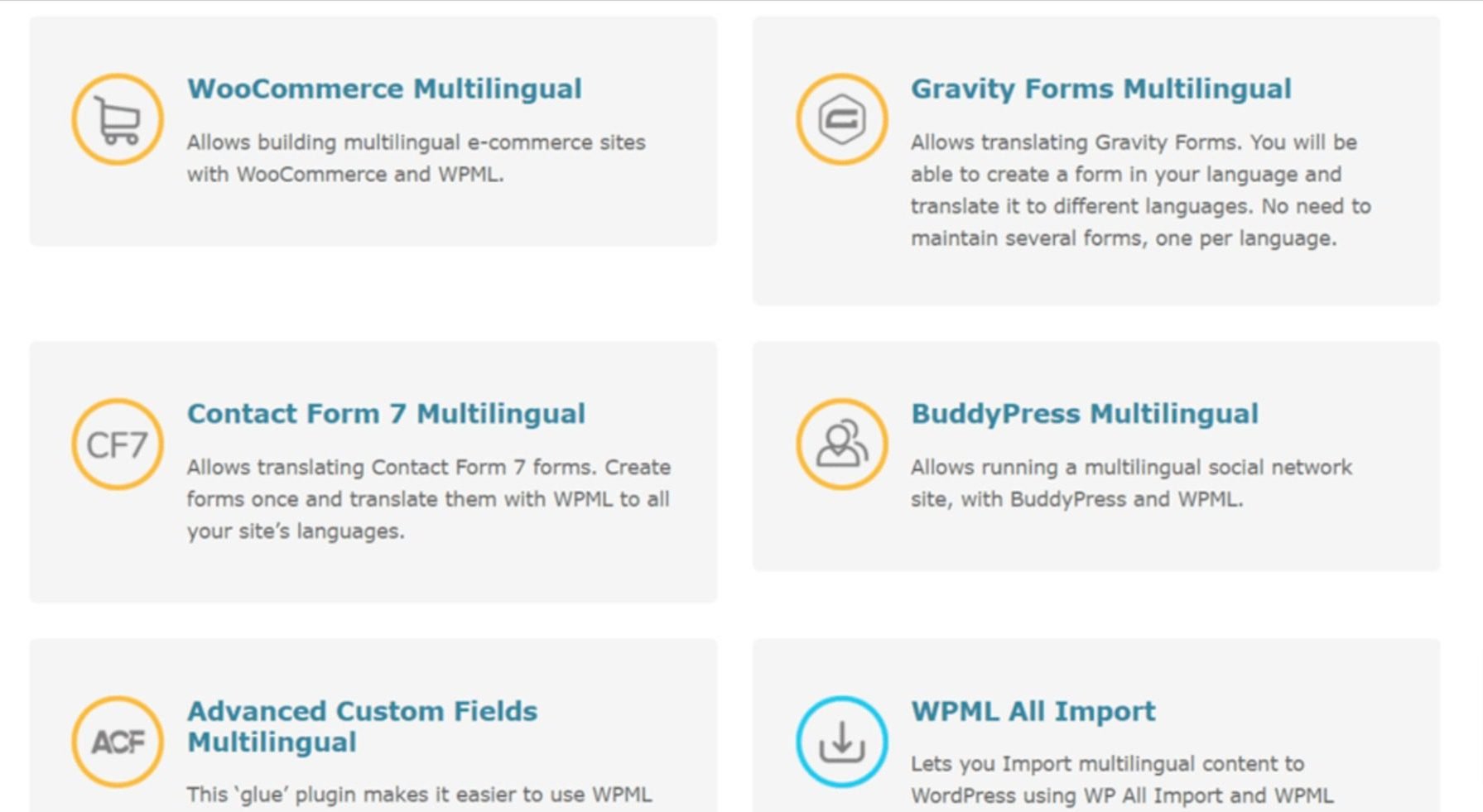
With that control comes compatibility with popular WordPress themes (like Divi) and major plugins and services you may already use. From WooCommerce to Gravity Forms, Contact Form 7, and Advanced Custom Fields (and more!), you can use WPML to translate them and their output for your customers. With fine control over which languages and what translations are used, you won’t need to worry about your products being presented incorrectly or your forms being labeled incoherently.
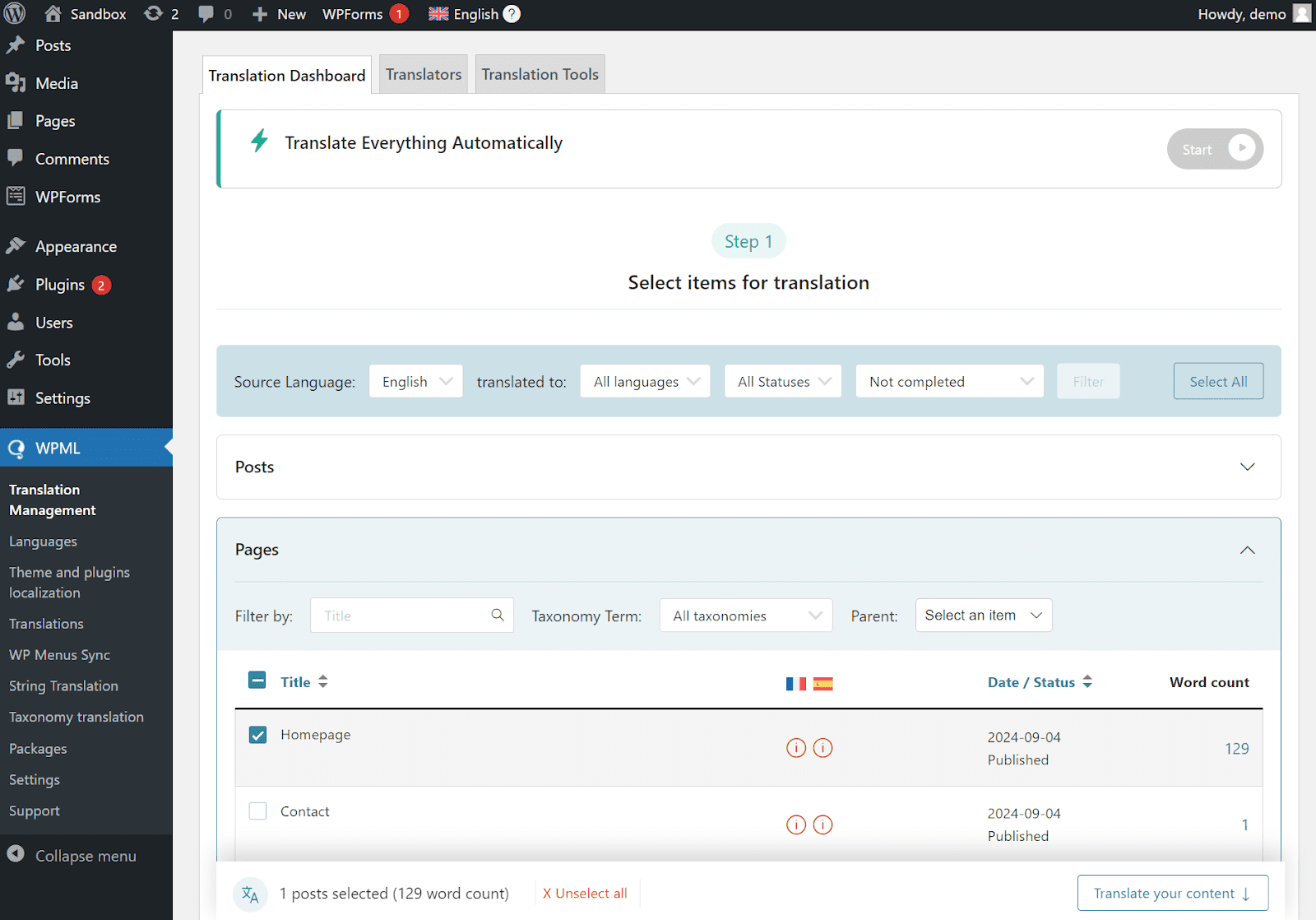
What We Like
- Full control over URLs: You can customize the URLs of your translated pages and posts to make them more SEO-friendly. This feature helps search engines understand your site’s structure and drive the right traffic to the right languages.
- SEO meta information: You can set SEO meta information for translations, such as title tags and meta descriptions, to help search engines understand the content of your translated pages and posts.
- Translation management: WPML provides a system that allows you to manage all your translations in one place. You can assign translation jobs to translators, track the progress of translations, and review completed translations.
- Multilingual e-commerce: WPML is compatible with WooCommerce and other popular e-commerce plugins, allowing you to create multilingual online stores easily.
- Translation for every element: WPML lets you translate every element of your WordPress site, including navigation, widgets, pages, articles, custom post types, or any other element. WPML also supports the Gutenberg editor.
What Could Be Improved
- Potential Page Load Impact: WPML can slow page load times, especially with significant content or installed plugins.
🥇Why We Picked It
WPML has been around for a long time and remains one of the most reliable multilingual solutions to date. It offers a range of features, including manual and automatic translation options, SEO optimization, and compatibility with a wide range of WordPress themes and plugins.
Who Should Use It
WPML has done a lot of work to be the go-to translation plugin for WordPress. Their costs can be a little high, but since it outputs reliable translations, it really isn’t that bad. More mid-to-large business will use this plugin but its simple enough for smaller websites to use as well.
Community Reviews And Ratings
Users like WPML because it’s easy to use and helps websites speak many languages. Reviews on G2 and Capterra say it’s great for managing translations smoothly.
Pricing
WPML is a premium-only plugin. Tiers start at €39 per year (~$43) for a single site with basic functions. They can go up to €199 per year (~$218) for unlimited sites and access to all features.
2. TranslatePress
🥈 Easiest WordPress Translation Plugin
TranslatePress works a little differently than other WordPress translation plugins. It doesn’t require the website’s backend to work with the translations. This plugin gives a real-time look at the translations you provide, working almost like a page-builder to ensure that your site looks and feels the same to everyone, regardless of the language they see on your site.
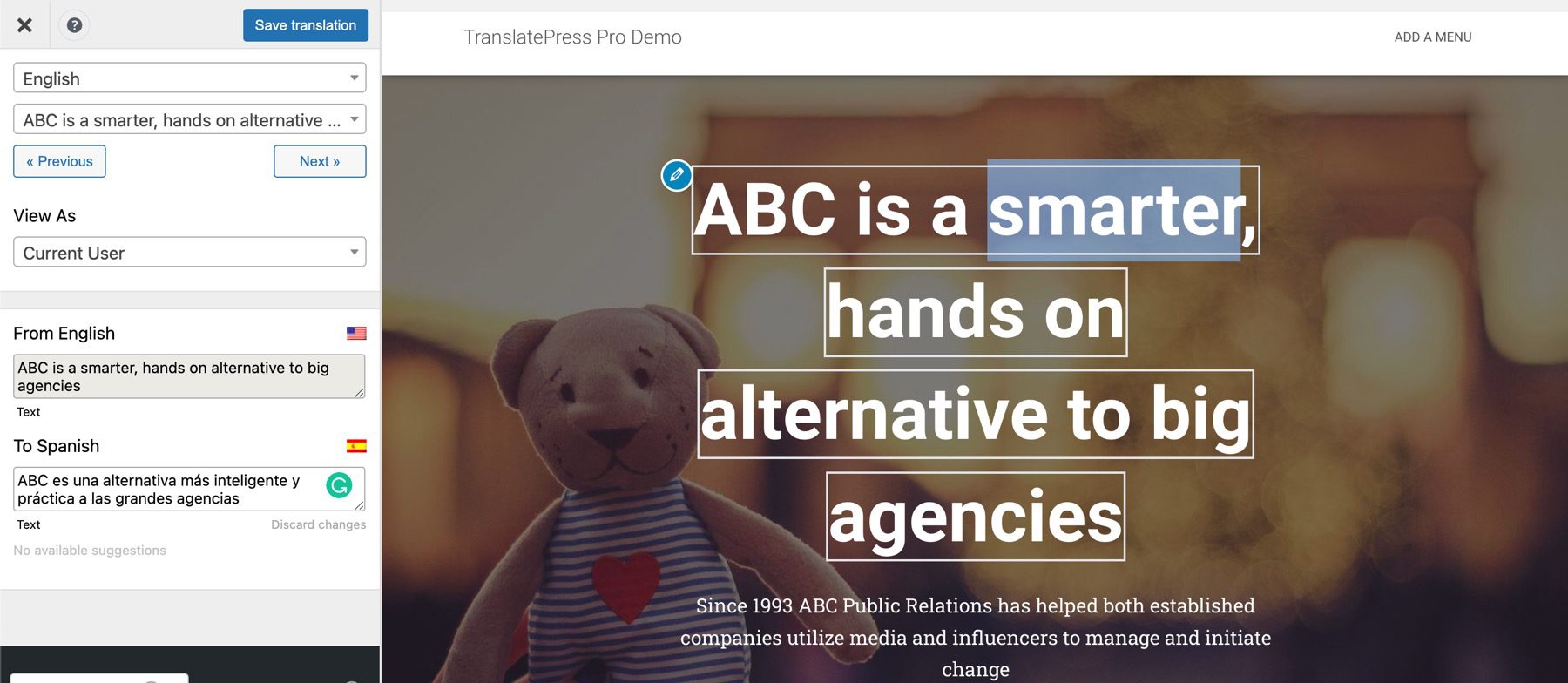
By giving this level of control, TranslatePress allows users to be specific about which elements of their websites get translated manually or automatically. One of the other highlights of TranslatePress is that this feature, among many others, comes in the free version. Paid upgrades unlock access to add-ons, extensions, and more advanced features.
What We Like
- Front-end Translation: TranslatePress allows you to translate your WordPress site directly from the front end, with full support for WooCommerce, complex themes, and site builders. You can translate your website without switching between the editor, string translation interfaces, or badly translated plugins. You work with the final page directly from the front end, with full support for WooCommerce and site builders.
- Automatic Translation: TranslatePress is integrated with Google Translate and DeepL, allowing you to quickly get your content automatically translated and only adjust what’s imperfect. This feature accelerates the translation process and saves you time.
- Multilingual SEO: TranslatePress supports SEO for page slug, page title, description, X (formerly known as Twitter), and Facebook social graph information. The HTML lang attribute is properly set. Sitemap support is available for all popular SEO plugins.
- Visual Translation Interface: TranslatePress has the simplest translation interface you can hope for. It works with any theme or plugin and allows you to translate the entire page simultaneously, including output from shortcodes, forms, and page builders. You can also translate images, sliders, and other media.
- GPL and Self-hosted: TranslatePress is GPL and self-hosted. This means that you own your translations forever. The yearly license gives you access to updates, new features, and support. After the license expires, your site will continue to work as expected.
What Could Be Improved
- Performance Impact: Depending on your website’s size and the number of translations, TranslatePress may impact performance if not optimized properly.
- Poor Machine Translation Quality: While TranslatePress has integrated with Google Translate and DeepL, the machine translation quality may not be perfect. It is always recommended to review the machine-translated content and make necessary adjustments.
- Resource Intensive: Real-time front-end translation could slow down your website, especially if you have dynamic content.
🥈Why We Picked It
TranslatePress shines with its intuitive interface and visual translation editor, making it ideal for beginners and non-technical users. Its focus is on user experience and accessibility for a wider audience. It boasts minimal performance impact, ensuring your website remains fast and responsive even in multiple languages.
Who Should Use It
TranslatePress is suited for small businesses and bloggers. It offers a simple and intuitive visual translation interface that allows users to translate their website content directly from the front end.
Community Reviews And Ratings
TranslatePress is praised on G2 and Capterra because it lets you translate from your website’s front page. Users find it simple and easy.
Pricing
TranslatePress has a free plan, with costs arising from core translation features. Paid plans start at €89 per year (~$97.50).
3. Weglot
🥉 WordPress Translation Plugin For Cloud-Based Convenience
A major issue with multilingual websites is that each translation takes up space on the server, in your post and page list, and requires manual management. With Weglot, that’s not an issue. The plugin takes your media and content, even the content pulled from third-party sources, and translates it automatically. Meaning there is no need to maintain multiple identical and duplicate websites.
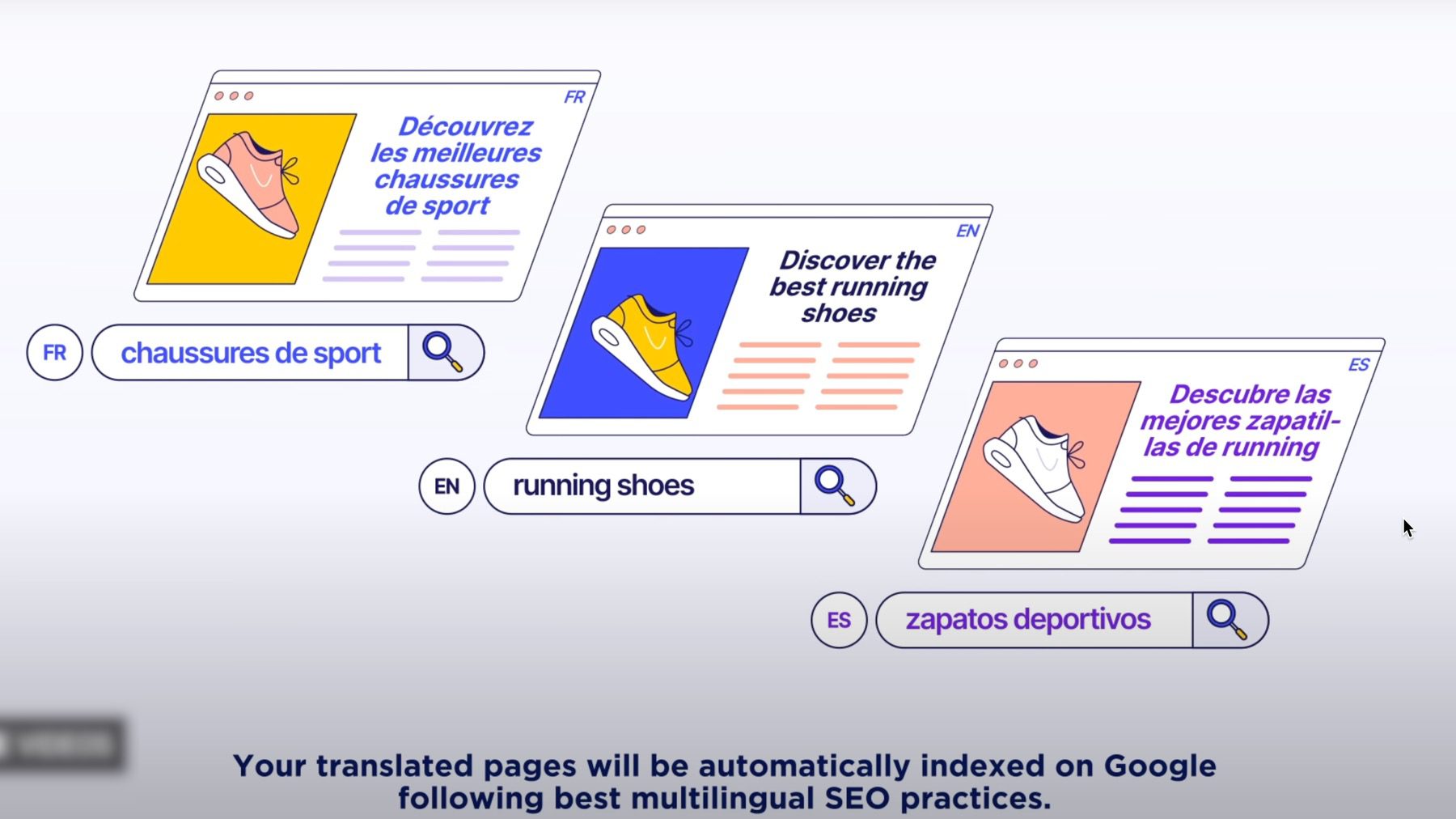
An interesting feature of Weglot is the ability to set guidelines for what you want the translation on your site to look like. You can set it to a fast translation, relying on Google, Yandex, and DeepL (among others) to translate your site automatically. You can take full control and manually enter your translations for specific languages. And if you have the budget and need, a human translator can work on the most accurate content possible. Weglot also provides a glossary of phrases and terms (your brand name, for instance) never to translate so it stays consistent across the site.
What We Liked
- Quick and Easy Installation: Weglot can be installed in minutes without any coding experience or shortcuts required. You can select your languages and start translating your site within 5 minutes (or less).
- Automatic Content Detection: Weglot automatically detects your website content for translation, including posts, pages, menus, eCommerce products, widgets, headers, sidebars, popups, and more.
- All-in-One Translation Interface: Weglot provides a user-friendly interface to review your translated content. You can order professional translators, add teammates for human translation, and refine your automatic translations for impactful website localization. Plus, you can see your edits in real time through their Visual Editor.
- Multilingual SEO: Weglot follows Google’s SEO best practices to maximize your searchability across different languages and search engines. Through AI-powered machine translation, it translates all of your metadata and automatically adds hreflang tags. Even better, Weglot automatically translates SEO tags added by SEO plugins.
- Compatibility: Weglot is compatible with every WordPress theme, plugin, and add-on, including page builders (Elementor, Divi), Yoast SEO, and WooCommerce.
What Could Be Improved
- Accuracy in Translation: Although Weglot uses machine translation, it is not always accurate and may require manual editing. It would be great if they could improve their machine translation algorithms to provide more accurate translations.
- Support: You may report issues with Weglot’s customer support, citing slow response times and unhelpful responses. It would be great if they could improve their customer support to provide more timely and effective assistance.
🥉Why We Picked It
Weglot offers a cloud-based solution, eliminating the need for complex plugin installations and updates. This showcases your appreciation for user convenience and streamlined workflows. Moreover, it excels in automatic translation, offering a fast and easy way to translate your website content.
Who Should Use It
Weglot is suited for e-commerce websites and online stores. It offers a simple and intuitive interface, allowing users to translate their website content into multiple languages quickly.
Community Reviews And Ratings
Users on G2 and Capterra love Weglot because it uses smart technology to translate websites quickly. It’s popular for making websites multilingual without much hassle.
Pricing
Weglot has a free plan, with costs arising from core translation features. Paid plans start at €15 per month (~$16.50) or €150 per year.
4. Multilanguage
Multilanguage is a very powerful WordPress translation plugin. Still, it is mostly designed for those users who already have a translation of their site and need a way to implement it. While this plugin does support automatic Google translation, the big draw is the ease with which you can provide your translations to posts and pages, categories, menus, and tags.
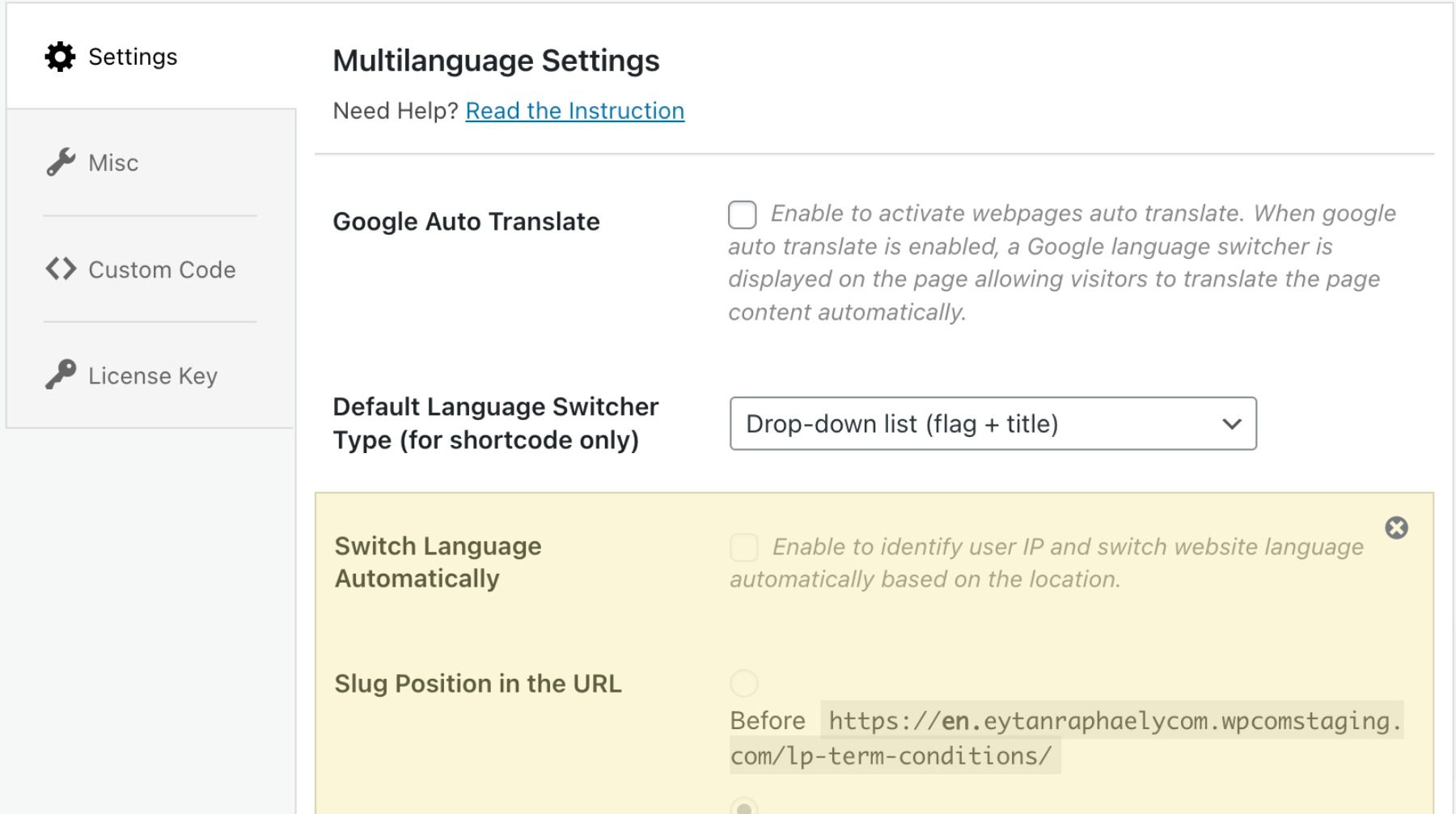
The free version of the plugin can handle what most blogs and sites need for translation. Still, suppose you need more than what comes for free. In that case, the Pro upgrade includes translations for WordPress taxonomies, page builder compatibility, custom fields, and language slug position changes (such as en.example.com versus example.com/en).
What We Like
- Simple settings: Multilanguage has simple settings that make it easy to set up without modifying code. You can set up your multilingual website quickly and easily.
- Block Editor Compatible: Multilanguage is compatible with the latest WordPress version and supports the block editor (Gutenberg).
- Translation-ready admin dashboard: The plugin provides an admin dashboard ready for translation. You can translate the admin dashboard into your preferred language.
- Flexibility for Developers: Multilanguage allows you to add custom code via its plugin settings page. This means that you can customize the plugin to suit your needs.
- Hide link slug for the default language: Multilanguage allows you to hide the link slug for the default language. You can have a cleaner URL structure for your default language.
- Supports hreflang links: Multilanguage enables you to add hreflang links to your content to improve SEO.
What Could Be Improved
- Limited language support: Multilanguage supports a limited number of languages compared to other plugins.
- No automatic translation feature: Unlike other translation plugins, Multilanguage has no automatic translation feature. This means you will need to translate your content manually or use a third-party service.
- No support for WooCommerce: Multilanguage does not support WooCommerce, a popular WordPress plugin for eCommerce websites.
Who Should Use It
Multilanguage is ideal for website owners who need a basic solution for creating a bilingual or multilingual site. It offers a simple interface for managing translations. It’s perfect for beginners who want to get started quickly. If you’re catering to a specific region or ethnic group and need only a few translations, Multilanguage can handle that without overwhelming you.
Community Reviews And Ratings
On the WordPress repository, users think Multilanguage is helpful because it supports many languages and is easy to use. It’s good for making websites in different languages.
Pricing
Multilanguage has a free plan, with costs arising from core translation features. Paid plans with a Pro upgrade start at $39 per year.
5. GTranslate

Most internet users are familiar with Google Translate. If you’re a Chrome user, there’s a good chance you’ve had a modal pop-up asking if you want a page translated from X language to your native tongue. Or perhaps you’ve copied/pasted some text into the Google search bar, and Google spat out an automatic translation. That’s the same technology that Gtranslate uses at its base.
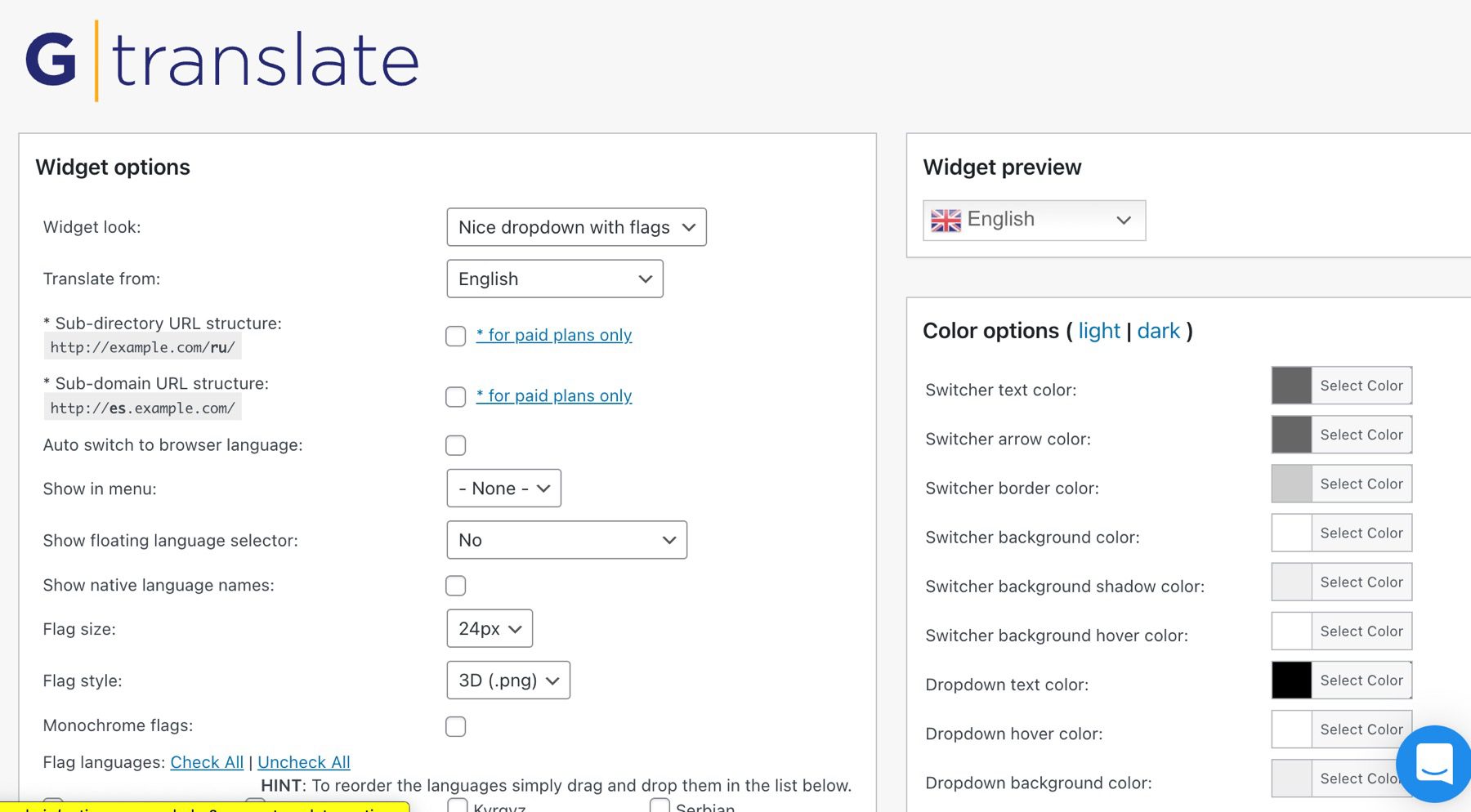
The most useful part of GTranslate is the ability for visitors to choose which translation they want. Because the free version uses Google’s machine translation, not every single page may convey the exact information in the exact that you want. Or that is technically understandable by the reader. This isn’t a fault of WordPress translation plugins, just the nature of translation itself. However, by providing the user a choice between translations, those polyglots who find your site will surely be able to find a translation that works for them.
What We Like
- In-context Corrections: This feature allows you to make corrections without losing the context of your translated content.
- Metadata translation: GTranslate can translate meta keywords and meta descriptions, which can help improve your website’s search engine appearance.
- Schema.org Microdata Translation: GTranslate supports schema.org microdata translation, which can also help improve your website’s search engine appearance.
- Seamless Updates and Backups: GTranslate is a cloud-based service that is updated on their side, so you don’t need to worry about backups on your side.
What Could Be Improved
- Translation quality: Although GTranslate supports Neural Machine Translation (NMT) technology, which is more advanced than the previous statistical machine translation (SMT) technology, it still has room for improvement in accuracy and naturalness.
- Internet Dependency: GTranslate requires an internet connection. This limitation can be problematic if you’re in a rush with limited internet access.
- No Search Engine Indexing with Free Version: The free version has great core features, but if you want search engines to crawl your translated content, you will need a paid version.
GTranslate caters to website owners who want automatic translations using online services. It provides machine-generated translations, making translating your content into various languages effortless. Users can choose from a broad range of languages.
Community Reviews And Ratings
GTranslate is praised on G2 and the WordPress repository for its easy translation and customizable language switcher. People like it for making websites speak different languages smoothly.
Pricing
GTranslate has a free plan. But if you want search engine indexing, paid plans start at $9.99 per month.
6. Loco Translate

Loco Translate is fast and lightweight but also feature-rich. Developers can also love what Loco Translate offers. They can tie into multiple language APIs like DeepL, Google, Microsoft, and Yandex. Additionally, the plugin allows website owners to update their language files directly from the theme itself (or the plugin) without going through a cloud host. Because of this, you can extract translatable strings from your source code to bring specific parts of your site to life for everyone.
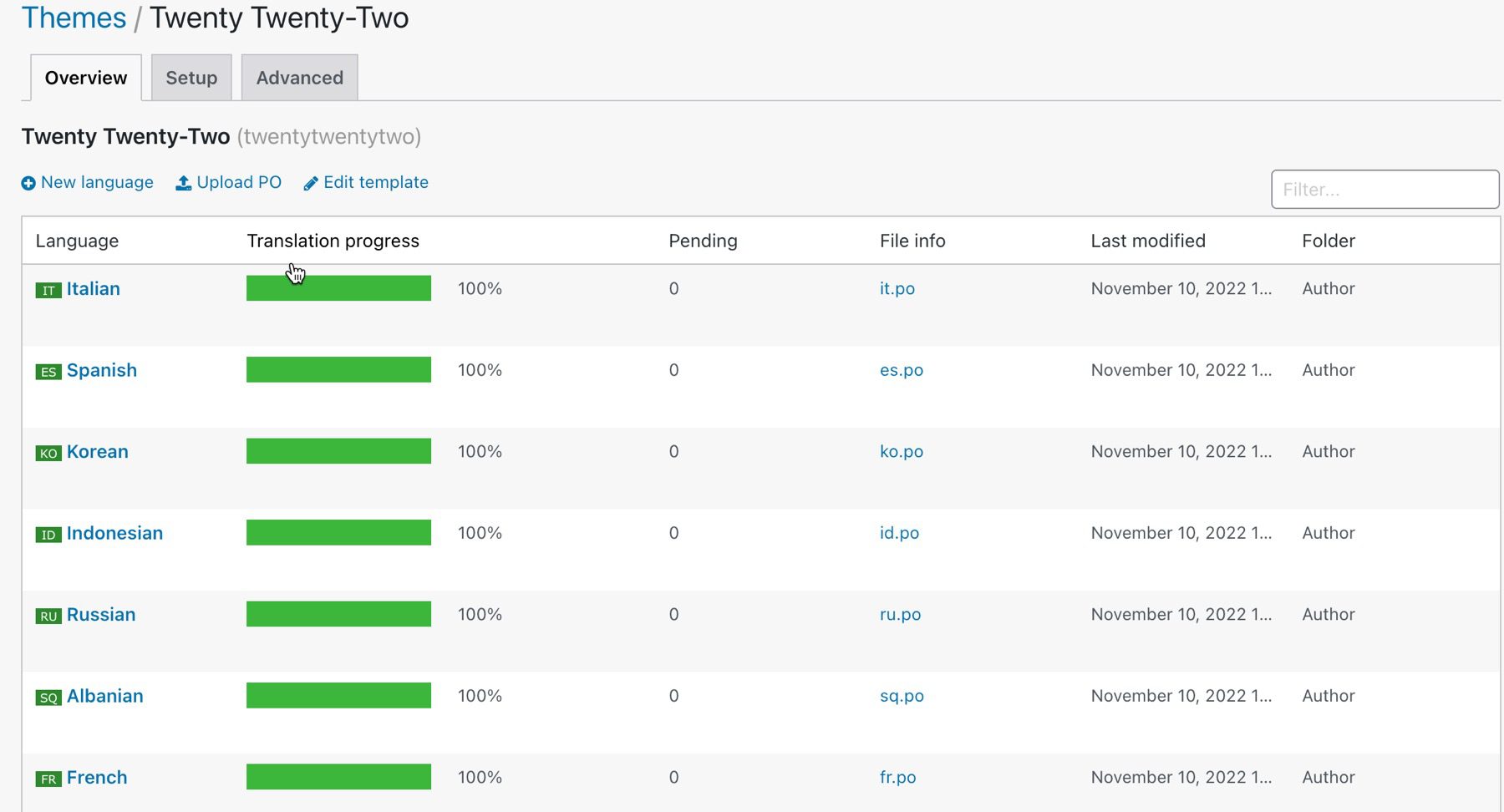
With over a million active users and a 5-star review, this is one of the most trusted plugins on the list and should be considered if you are trying to translate your WordPress themes/plugins.
What We Like
- Built-in translation editor: Loco Translate provides a built-in translation editor within the WordPress admin, which allows you to edit translation files in the browser.
- Integration with translation APIs: Loco Translate integrates with translation APIs, including DeepL, Google, Microsoft, and Lecto AI, which can help you translate your content more efficiently.
- Create/update language files: Loco Translate allows you to create and update language files directly in your theme or plugin, saving you time and effort.
- Easily Identify Translatable Source Code: Loco Translate can extract translatable strings from your source code, which can help you identify which strings need to be translated.
- Native MO file compilation: Loco Translate can compile native MO files without needing Gettext on your system, making the translation process smoother.
What Could Be Improved
- Manual Translation Effort: While automatic translation APIs are available, Loco Translate requires manual effort to translate strings. You must review and edit the translations to ensure quality and context.
- Limited support for machine translation: While Loco Translate integrates with translation APIs, including DeepL, Google, Microsoft, and Lecto AI, the quality of machine translations can be inconsistent and may require additional editing.
- Limited support for right-to-left languages: Loco Translate has limited support for right-to-left languages, making it difficult to translate content. The plugin does not provide a built-in solution for handling right-to-left text directionality. However, workarounds, such as manually editing the translation files to include the necessary text directionality information, are available.
Who Should Use It
Loco Translate suits developers and site administrators who prefer manual control over translations. It allows you to add multilingual content manually. You have complete control over quality. Developers can fine-tune translations to match their brand voice.
Community Reviews And Ratings
Users like Loco Translate on the WordPress repository because it’s easy to edit translations right where you work. It’s simple to manage translations in WordPress.
Pricing
Loco Translate has a free plan, with costs arising from core translation features. Paid plans start at $5.95 per month.
7. Polylang and Lingotek

Polylang is a great alternative to the more expensive plugins above. It lets you translate your pages, posts, media, and more to your chosen languages via language packs that you can purchase. It also adds an option in your navigation menu so your users can easily switch between languages.
Polylang also provides integration with Lingotek to provide alternative translation options. You can select between machine translations, community/crowdsourced translations, and professional translations using the Lingotek cloud platform. This makes sure you’ll always have the right translation option available. They also have a separate plugin for WooCommerce integration.
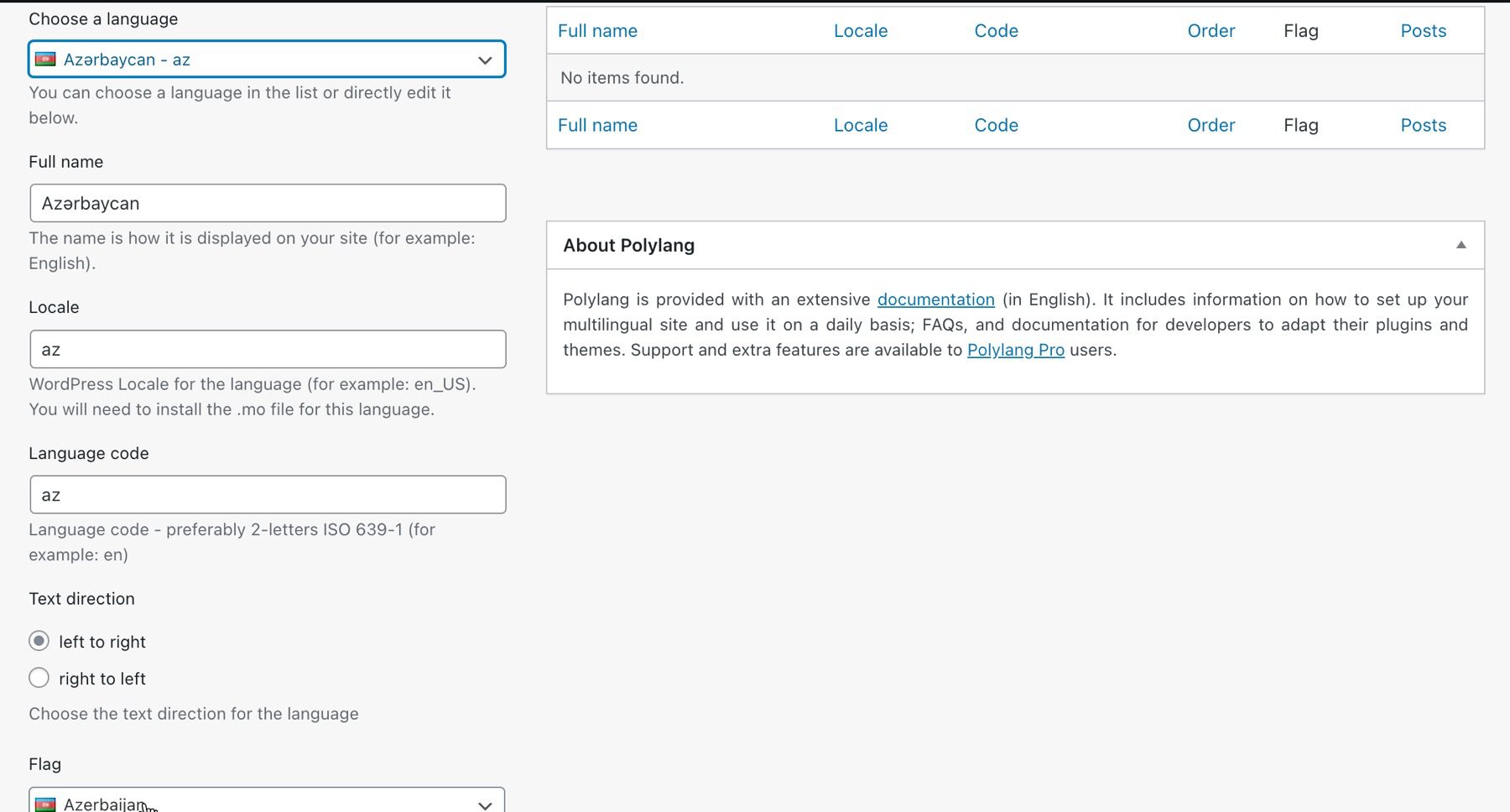
With over 500,000 active users and a 5-star review, Polylang is one of the top options available for translator plugins.
What We Like
- Multilingual Site Creation: Polylang allows you to create a multilingual site featuring from just one extra language to 10 or more, depending on your needs. There is no limit in the number of languages added and WordPress’ language packs are automatically downloaded when ready.
- Robust Core Features: Polylang and Polylang Pro share the same core, providing features such as translating posts, pages, media, categories, post tags, custom post types and taxonomies, and RSS feeds; RTL scripts are supported.
- Customizable Language Switcher: Polylang provides a customizable language switcher as a widget or a navigation menu item so users can easily switch language translations.
- Compatibility with Yoast SEO: Polylang is compatible with Yoast SEO, a popular WordPress plugin that helps optimize your website for search engines.
What Could Be Improved
- Translation of Custom Tables: Polylang does not support the translation of custom tables, which can be a limitation for some users.
- Translation of Strings in Themes and Plugins: Polylang does not provide an easy way to translate strings in themes and plugins. This can challenge you if you want to translate your entire website.
Who Should Use It
Polylang suits both beginners and advanced users who want a robust multilingual solution. It supports manual translations, language switchers, and custom post types.
Community Reviews And Ratings
Reviews on G2 say Polylang is great because it’s easy to use and works well with WordPress. It’s good for making bilingual or multilingual websites.
Pricing
Polylang has a free plan, with costs arising from core translation features. Paid plans start at €99 per year (~$109).
8. Google Website Translator

Google Website Translator is fast, effective, simple, and easy. When you want a lightweight and efficient plugin, this one will do it. It translates your content, other plugins, and theme defaults, and you can set it all up with either a widget or a shortcode.
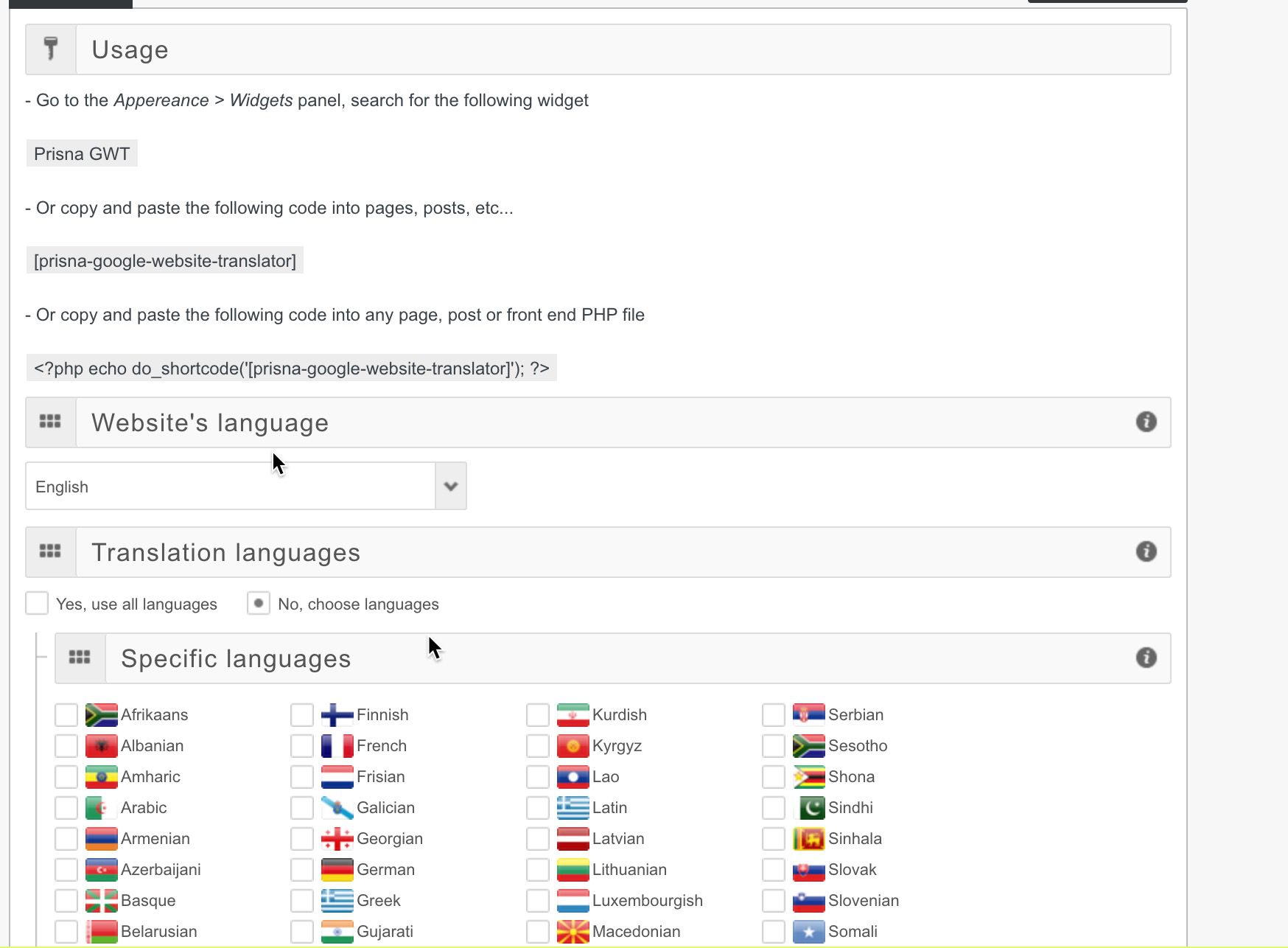
Any part of your site you must translate can be done using a shortcode. Without the need to bring in any files from other platforms, this plugin does the job automatically and leaves you to handle the other parts of the website administration.
What We Like
- Easy setup: The plugin is easy to set up, with simple settings that are easy to understand. The settings include inline help that everybody can understand.
- Supports Automatic Site Translation with 100+ Languages: The plugin provides a simple and complete multilingual solution for WordPress. It brings the power of Google’s automatic translation service to translate your website into 100+ languages.
- Multiple styles: The plugin includes all the 3 inline and all 4 tabbed styles, giving users the flexibility to choose the style that suits their website design.
- Widget and shortcode support: The plugin can be used as a widget or shortcode, making it easy to add a translation button and dropdown menu to any page or post on your website.
- Import/Export settings: The plugin allows you to import/export settings, making it easy to transfer configurations between websites or installations.
What Could Be Improved
- Language Translation Consistency: While Google generates translations quickly, the quality varies significantly across different languages. For instance, translations for languages like Afrikaans, German, Portuguese, and Spanish tend to be more accurate, while others like Kurdish and Nepali are less reliable.
- Lack of Nuance: The automated translations may miss cultural nuances, idiomatic expressions, and context-specific meanings that a human translator would capture.
Who Should Use It
Google Website Translator is recommended for website owners who want to offer a quick translation option to visitors. It provides a dropdown menu for users to select their preferred language.
Community Reviews And Ratings
Google Website Translator is applauded on the WordPress repository for its integration ease and Google-powered translations. It provides a straightforward solution for multilingual WordPress websites.
Pricing
Google Website Translator has a free plan, with costs arising from core translation features. Paid plans start at $50 per month.
9. Multisite Language Switcher

The Multisite Language Switcher is a plugin for WordPress that adds multilingual support to a WordPress multisite installation. It allows users to manage translations of posts, pages, custom post types, categories, tags, and custom taxonomies. The plugin uses flag icons from FamFamFam.
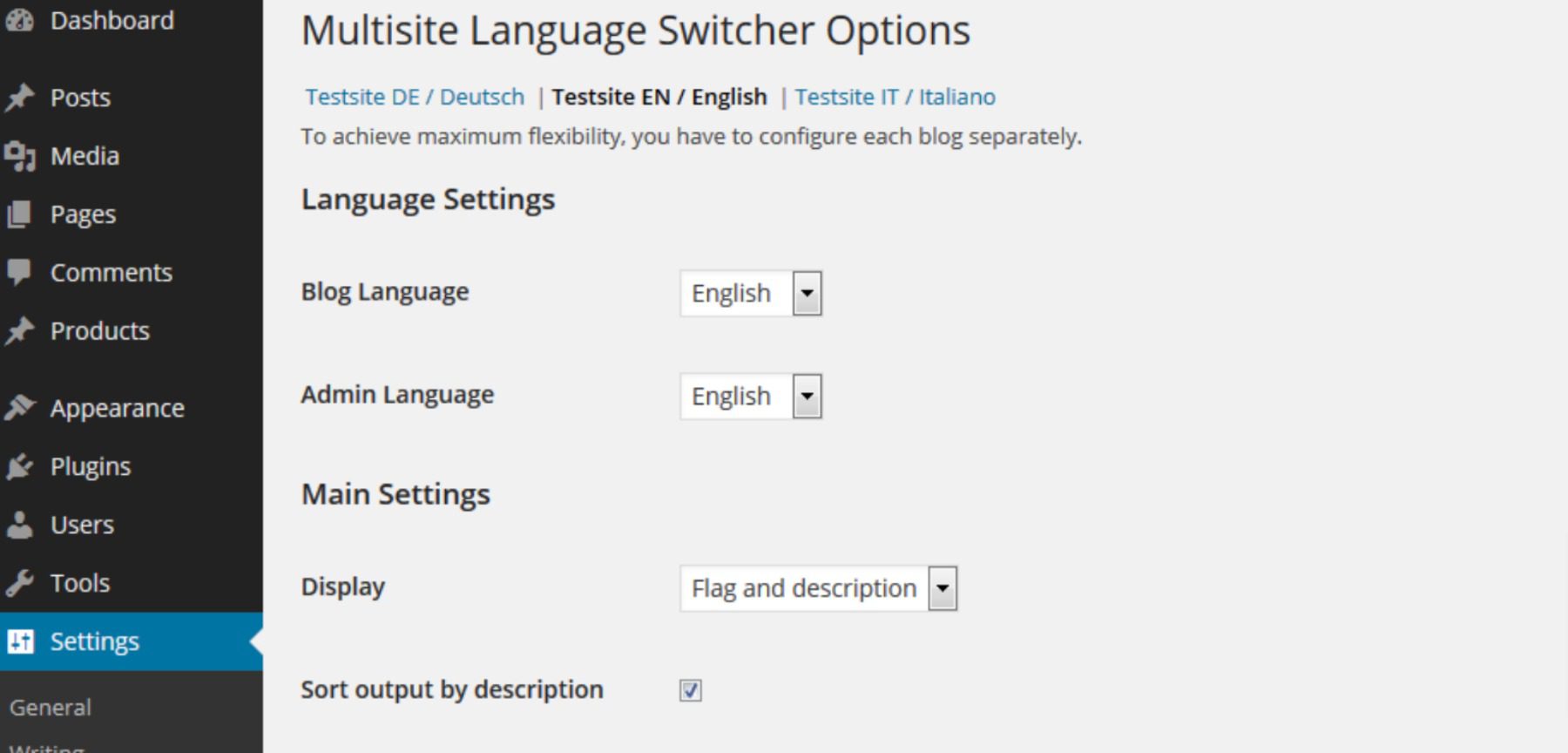
This plugin can incorporate one or multiple languages and is compatible with Yoast SEO and All-in-One SEO Pack. Free extensions allow you to set unique featured images for each language.
What We Like
- Multisite Localized Content: With WordPress Multisite, you can create separate websites for different languages. This means you can provide truly localized content tailored to cultural preferences in each language.
- Flexible Site Structure: Multisite allows you to choose how to structure your sites. You can use subdomains, subdirectories, or even different top-level domains (e.g., yoursite.ru, yoursite.de). Having distinct URLs for each site makes navigation faster for visitors.
- Complete Solution Out of the Box: Unlike other multilingual solutions, you don’t need an additional plugin to set up your multilingual site when using multisite.
- Supports translations of various content types: The plugin enables you to manage translations of posts, pages, custom post types, categories, tags, and taxonomies.
What Could Be Improved
- More to Manage: Each language version is a separate website, which means you’ll need to manage them individually. This can be cumbersome if you have many languages.
- Complex Setup: Setting up multisite translation requires more technical knowledge than single-site translation.
- Testing Challenges: When testing new plugins or features, it’s harder for individual site administrators to work because they cannot activate/deactivate or install/delete plugins/themes directly. These actions can only be done through the Super Admin user.
Who Should Use It
Multisite Language Switcher is suited to the developers managing WordPress multisite installations. This plugin is designed explicitly for multisite networks. It allows you to manage translations across multiple sites from a single dashboard.
Community Reviews And Ratings
Multisite Language Switcher stands out on the WordPress repository for its ability to manage translations across multiple WordPress sites. It garners appreciation for its functionality and effectiveness.
Pricing
Multisite Language Switcher is free to use. Unlike the previous tools, it doesn’t have any paid plans.
Get Multisite Language Switcher
Comparing All Our Picks For WordPress Translation Plugins
There is no lack of WordPress translation plugins that you can choose from. However, choosing the right plugin is a bit more difficult. Site owners should weigh their audience’s needs and demographics versus their site’s content. Some plugins work best with stores. Others work best with huge enterprise blogs with dozens of custom taxonomies and post types.
Price Comparison
The options on our list offer free and premium plugins, so no matter the translation level you need, there’s an option for you. Take a look at the table below to review all of our translation plugins, as well as the pricing for each.
| Plugin | Price | Free Option | ||
|---|---|---|---|---|
| 🥇 | WPML | €39 per year (~$43) | ❌ | Visit |
| 🥈 | TranslatePress | €89 per year (~$97.50) | ✔️ | Visit |
| 🥉 | Weglot | €15 per month (~$16.50) or €150 per year | ✔️ | Visit |
| 4 | Multilanguage | $39 per year | ✔️ | Visit |
| 5 | GTranslate | $9.99 per month ($99.90 per year) | ✔️ | Visit |
| 6 | Loco Translate | $5.95 per month | ✔️ | Visit |
| 7 | Polylang | €99 per year (~$109) | ✔️ | Visit |
| 8 | Google Website Translator | $50 per month | ✔️ | Visit |
| 9 | Multisite Language Switcher | Free | ✔️ | Visit |
Feature Comparison
Out of all of the translation plugins on our list, three offer the most bang for your buck. In the top spot, WPML is an excellent choice for those who need a premium solution. You can control what content you need to be translated or let WMPL do the work with automatic translations. If you want a preview of how your pages will look in other languages, try TranslatePress. It functions much like a front-end page builder but for translations. Finally, there’s Weglot. It works by taking all of your content, including that of other plugins, and automatically translates it, saving you time to focus on other tasks.
| 🥇 WPML | 🥈 TranslatePress | 🥉 Weglot | |
|---|---|---|---|
| Starting Price | €39 per year | $8.84 per month | $16.59 per month |
| Automatic Translation | ✔️ | ✔️ | ✔️ |
| Manual Translation | ✔️ | ✔️ | ❌ |
| Translation Memory | ✔️ | ✔️ | ❌ |
| SEO Optimization | ✔️ | ✔️ | ✔️ |
| Customize Languages | ✔️ | ✔️ | ✔️ |
| Multilingual Sitemaps | ✔️ | ✔️ | ✔️ |
| Visual Editor Integration | ✔️ | ✔️ | ✔️ |
| Compatibility with Popular Themes | ✔️ | ✔️ | ✔️ |
| Community Ratings | 4/5 ⭐⭐⭐⭐ Read Reviews | 5/5 ⭐⭐⭐⭐⭐ Read Reviews | 5/5 ⭐⭐⭐⭐⭐ Read Reviews |
| Get WPML | Get TranslatePress | Get Weglot |
What Is The Ideal WordPress Translation Plugin?
Our top recommendation choice is WPML. As the most feature-rich option on our list, there are plenty of features for those looking for a good translation plugin. You can choose from manual or automatic translations, apply different languages depending on the page or post, and easily translate eCommerce products with WPML. Additionally, you can use your favorite page builder, Divi, Elementor, or similar, to make translations on the front end to view how they look in real-time. No matter what you need to translate, WPML is an excellent choice.
If you’re looking for the top WordPress plugins for various purposes, check out our ultimate list of recommendations!
What do you think is most important when choosing WordPress translation plugins?
Article featured image illustration by igor kisselev / Shutterstock.com

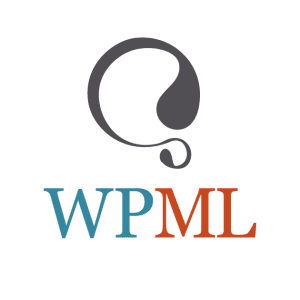


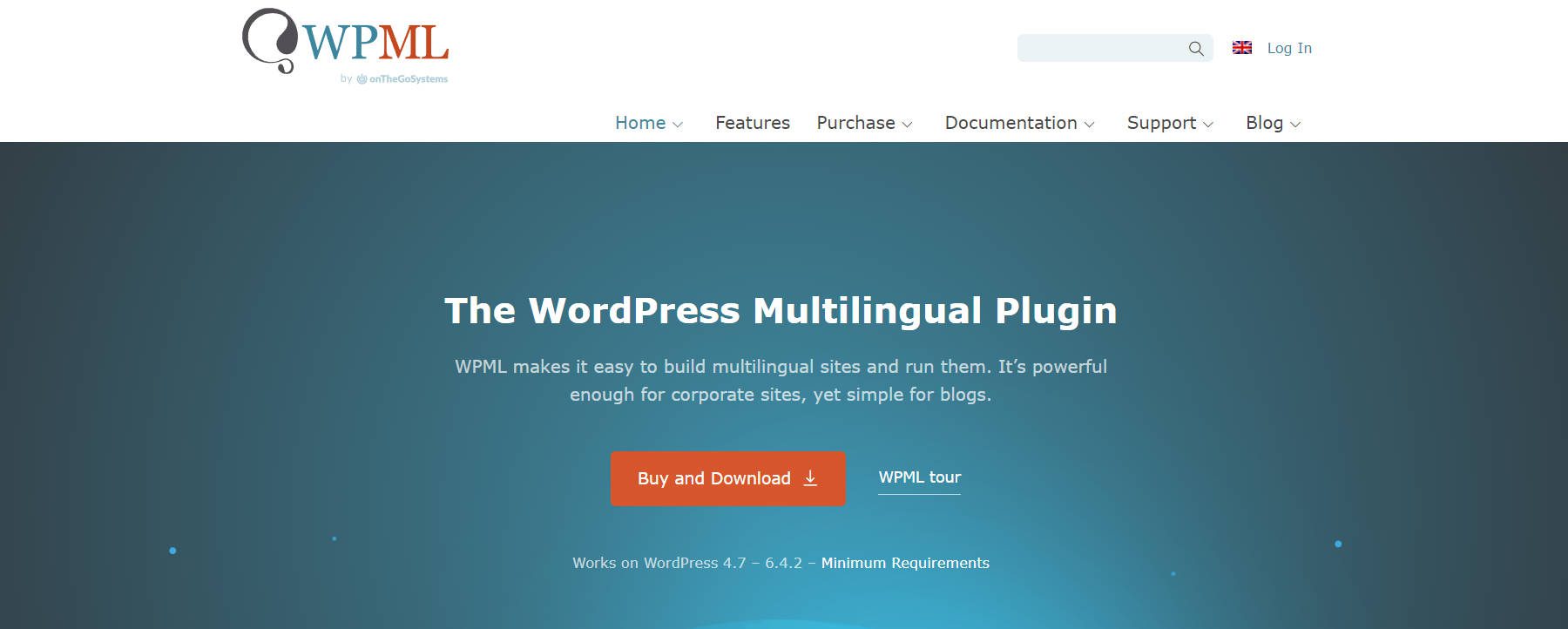







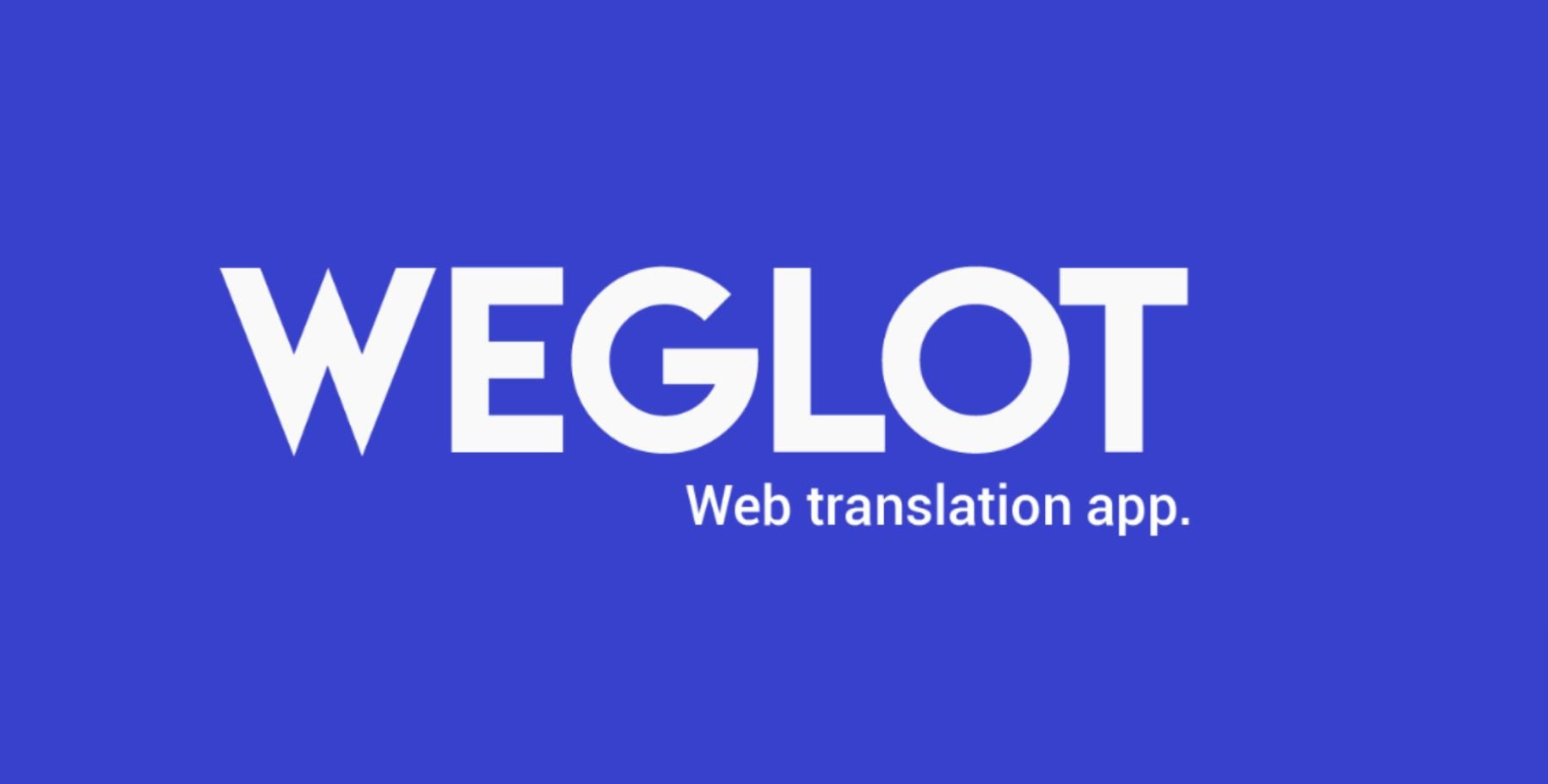








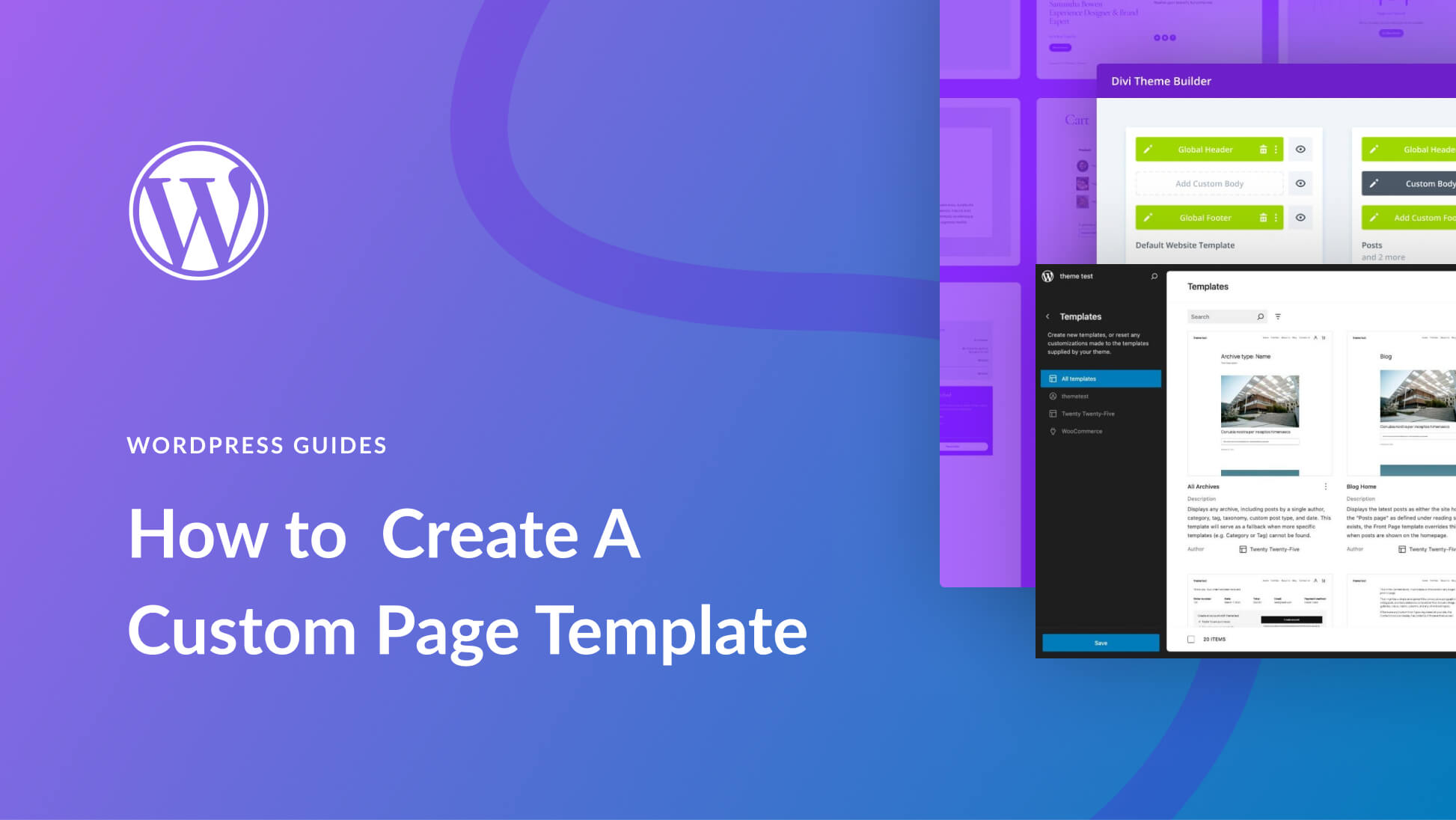
WPML in combination with Divi is an absolute horror. There is no beginning and end to the documentation, you get to read 10 different posts or articles just to get to the same point, lots of words from WPML but hardly any help. I love Divi to death, but WPML certainly does not: the whole page, sometimes consisting of 30 odd parts, is cut to pieces for translation, making it a mess when manually correcting translations… which is a must, since importing xliff files is flawed, where nobody can explain why some pages or posts are exported and some are not.
Complete and utter mess, just finished my absolute last job using WPML. Beware!
Did you try Falang for Divi available on the elegantheme marketplace
Work with Falang for WordPress plugin.
You can translate the content in each module directly
We use Linguise, that is a cloud translation system, and you can manually make translation revisions from frontend. It’s mostly like Weglot but way cheaper and nicely integrated with all DIVI content
We have recently designed a Divi website with G Translate, and we have used some others too like WPML but this list is so beneficial for us. Thankyou for sharing these resources.
My choice from this list is Polylang. It works nicely with Divi as well.
For me the most important criteria was the SEO component.
I started using TranslatePress which is amazing and simple to use.
I moved to WPML because I wanted separate subdomains for every language and the ability to use a social sharing automation based on categories in different languages.